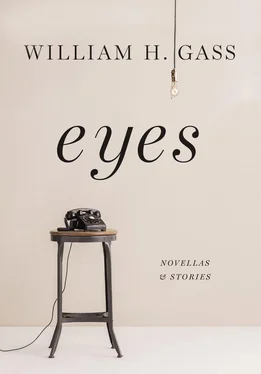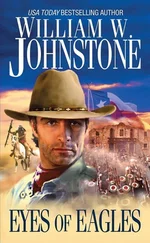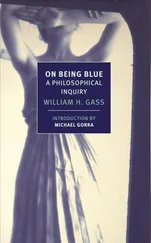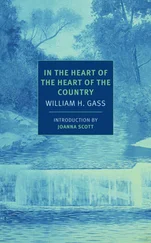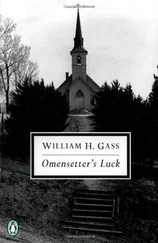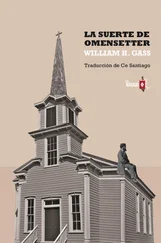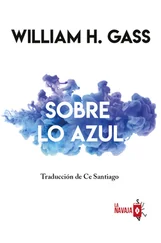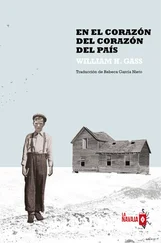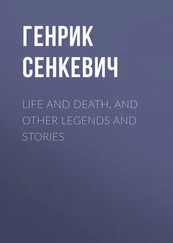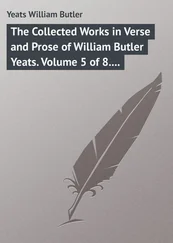Mr. Gab would lower his nose as if sniffing up odors from the image. If the great gray world holds sway beneath the garish commerce of color, so the perception of its beauty hides from the ordinary eye, for what does the ordinary eye do but ignore nearly everything it sees, seeking its own weak satisfactions?
Such shadows as are here, for instance, in these photographs, are not illusions to be simply sniffed at. Where are the real illusions, u-Stu? They dwell in the eyes and hearts and minds of those in the carriage — yes — greedy to be going to their girl, to their bank, to their business. Do they observe the street as a gray stream — no — they are off to play Monopoly. Scorn overcame Mr. Gab, whose voice sounded hoarse. They have mayhem on their minds.
Finally, Mr. Gab had got round to the War. Mr. Gab’s tour of duty — he was a corporal of supply — took him to Europe. In London he learned about the Bostonian Coburn. In Paris, he discovered Atget. In Berlin, he ran into Sander. In Prague…in Prague…Mr. Gab was mustered out in Europe and spent a vaguely substantial number of years in the continent’s major cities. More, Mr. Gab did not divulge; but he did speak at length of Italy’s glories, of Spain’s too, of Paris and Prague…He took u-Stu on slow walks across the Charles Bridge, describing the statuary that lined it, elegizing the decaying, dusty, untouched city, mounting the endless flight of steps to the Hradčany Castle, taking in both the Černín and the Royal Gardens. They strolled the Malá Strana, the Smetana Quai, as well as those renamed for Janáček and Masaryk, had coffee in Wenceslas Square, visited St. Vitus Cathedral, and eventually crossed the Moldau bridges one word after another, each serving for two: a meaning in memory, an image in imagination.
When Mr. Gab returned to the States, he enrolled in New York’s City College on the GI Bill, while working, to make ends meet, serially at several photography shops and even serving, during a difficult period, as a guard in a gallery. But now the gaps in this history of his grew ever greater, became more noticeable than before; details, which had been pointlessly plentiful about Prague buildings and Italian traffic, disappeared into vague generalities like figures in a Sudek or a Coburn fog, and most questions, when rarely asked, were curtly rebuffed.
But Mr. Gab did regale his pupil with an account of his trip in a rented truck to their present city, and u-Stu was given to understand, though the story did not dwell on cargo or luggage, that his cartons came with him, and, in Johnstown, of all places, were threatened by a downpour which forced him for a time to heave to and wait the water out, so sudden and severe it was, and how nervous he had become watching the Conemaugh River rise. The journey had all the qualities of uprootedness and flight, especially since Mr. Gab’s account did suggest that he’d left New York with his college education incomplete, and a bitterness about everything academic, about study and teaching and scholarship, which only hinted at why he had abandoned his archival enterprise.
For in Europe, surrounded at first by fierce fighting, bombs made of blood and destruction, Mr. Gab had formed the intention of saving reality from its own demise by collecting and caring for the world in photographic form. There were footsteps he was following, or so he found out. Like Alvin Langdon Coburn he had been given a camera by an uncle. Like Alvin Langdon Coburn, he had crossed the sea to London. Like Coburn, he would tour Europe, though not with his mother, who was as missing from his life, he insisted, as that of u-Stu. In the footsteps of Mr. Coburn, possibly, but not in the same shoes, for he, Mr. Gab, hadn’t had a father who made shirts, and died leaving his mother money. He hadn’t found friends like Stieglitz and Steichen with whom he could converse, or exchange warm admirations. He sat in metal storerooms surrounded by supplies, and learned a few things about stocks and stores and shipment.
Unlike Johnstown’s fabled inundation, but rather drip by drip, words entered Stu’s ear, and filled his mind to flood stage finally; not that he needed to be instructed about the grimness of the world, or about what passed for human relations. Some of the words weren’t nice ones. Mr. Gab kept his tongue clean, but now and then a word like “whore” would slip out. You will not know that word I just used, Mr. Gab said hopefully. Stu thought he meant the word “catechism” which indeed he didn’t understand, but Mr. Gab meant “whore,” which he proceeded to define as anyone who accepts money in return for giving pleasure…pleasures that were mostly illusory. There were shysters for misma-nipulating the law. There were charlatans for the manufacture of falsehood. Quacks for promising health. Sharks for making illegal loans. Mountebanks to prey upon the foolishly greedy. Apparently, humanity was made of little else.
But there were, Mr. Gab assured u-Stu, the Saviors too. They bore witness. They documented. Eugène Atget had rescued Paris. Josef Sudek had done the same for Prague. August Sander had catalogued the workers of his country, as Salgado has tried to do for workers worldwide. Karl Blossfeldt, like Audubon, had preserved the wild plants. Bellocq had treated his Orleans whores with dignity. And how about Evelyn Cameron, who had saved Montana with her single shutter? Or Russell Lee, who photographed the Great Flood of ’37 as well as the Negro slums of Chicago? Or consider the work of a studio like that of Southworth & Hawes, whose images of Niagara Falls were among the more amazing ever made. He, Mr. Gab, had but one of their daguerreotypes. And Mr. Gab then disappeared into his room behind the rug to produce in a moment a group portrait taken in the Southworth & Hawes studio of the girls of Boston’s Emerson School, and through the envelope, which Mr. Gab did not remove, u-Stu saw the identically and centrally parted hair of thirty-one girls and the white lace collars of twenty-eight.
Mr. Gab went on to extol the work of Martín Chambi whom he had available only in a catalogue produced for an exhibit at the Smithsonian (so there were an unknown number of books behind the rug, perhaps in that closet, perhaps in a shelf above the boxes). Although Mr. Gab was capable of staring at a photograph uninterruptedly for many minutes, he had the annoying habit of flipping rapidly through books — dizzying u-Stu’s good eye, which could only receive the briefest tantalizations of an apparently magical place, set among the most remote mountains, Mr. Gab called “Macchoo Peechoo”—until he reached the photo he was searching for. There, there, Mr. Gab said, pointing: a young man in a most proper black suit and bow tie was standing beside a giant of a man clad in tatters, a cloth hat like an aviator’s helmet in the giant’s hand, a serape draped over the giant’s shoulders — and — and around the small man’s, a huge arm finished by fingers in the form of a great claw. The little fellow is the photographer’s assistant, Mr. Gab informed his. Who, u-Stu saw, was gazing up at the face of the giant with respectful incomprehension. But one was mostly drawn to the giant’s patched and tattered shirt and baggy trousers, to the barely thonged feet that had borne much, and finally to the huge stolid countenance, formed from endurance. Shots of shirts were rare.
Not all of Mr. Gab’s enthusiasms were trotted out at once. They were instead produced at intervals involving months, but each was offered as if no finer effort, no better example, could be imagined. Yet u-Stu came to believe that the artist Mr. Gab called P.H. (Ralph Waldo was the other Emerson) was dearest to him, after one afternoon being shown (again from the cache in the kitchen) a simple country and seaside scene: a crude sailboat manned by three, and oared as well, under way upon a marshy watercourse, the rowboat’s big sail, with its soft vertical curves and pale patches, in the center of the photograph, and to the left where the reeds began, though at the distance where there had to be land, a simple farmhouse resting in a clump of low trees, a trail of chimney smoke the sole sign of occupancy.
Читать дальше
